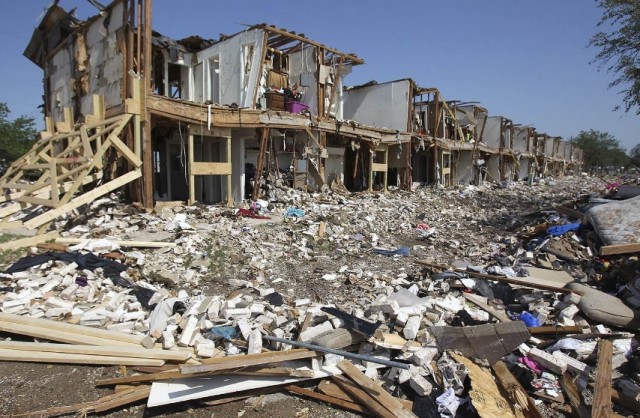
The explosion in West, Texas that killed 15 people three years ago was not an accident, according to federal investigators, who are now saying that the fire, which led to the blast, was set intentionally.
On April 17, 2013, a fire was lit inside the fertilizer plant, and burned for 20 minutes before igniting ammonium nitrate, triggering an enormous explosion that killed 12 emergency responders, injured 200 others, and damaged a nursing home, an apartment complex, and three of four schools in West, which is located about 20 minutes south of Dallas.
“This fire was a criminal act,” said Robert Elder, a Special Agent with the Bureau of Alcohol, Tobacco, Firearms, and Explosives.
The devastation caused by the blast may have been less severe if the proper protocols had been implemented. For instance, federal regulators say ammonium nitrate, a commercial farming chemical used in fertilizer, is not to be stored near combustible materials, as was the case in West, and should be kept under proper ventilation, according to a report by the U.S. Chemical Safety Board.
Improper zoning and a flawed emergency response also contributed to the deaths caused by the blast, which resembled that of a 2.1 magnitude earthquake. Other contributors include “a failure to conduct safety inspections of the plant, shortcomings in emergency response such as with hazmat training, and poor land planning that allowed development to sprout around the plant over the years,” reports CBS News.
“The Chemical Safety Board report says the response to the fire was flawed for various reasons, including for not establishing an incident command center and a lack of understanding about the possibility of a detonation.
“The lack of uniform regulations worries Mary Sanders, whose son, Kevin, was a volunteer firefighter killed in the explosion. She noted that Texas has taken steps to prevent a similar incident, including ensuring ammonium nitrate be kept separate from combustible material, but that regulations vary by state.”
Texas is notorious for loose regulations when it comes to the chemical industry, as well as other large industries. Environment Texas recently found that in 2015, nearly 680 industrial sites released 34,000 tons of air pollutants during over 3,400 “incidents of malfunctions and maintenance events.”
Violators are rarely held accountable for such offenses, typically receiving a slap on the wrist in the form of small fine, giving companies little incentive to the follow the rules.
According to the chemical safety board, 19 chemical plants storing ammonium nitrate are located within a half-mile of a school, hospital, or nursing home.
The fertilizer plant in West “was about 550 feet from the closest school, which sustained catastrophic damage as a result of the explosion, which could have resulted in additional loss of life had the school been in session at the time,” the report found.
More than $100 million in property damage was caused by the blast. Authorities say they currently have no suspects.
Sources:

